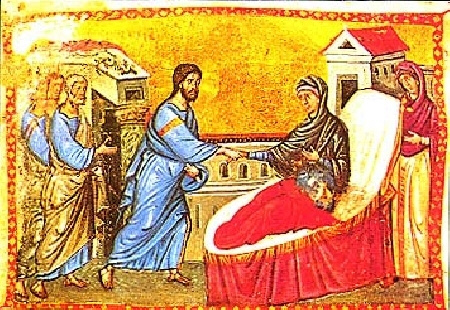Candlemas and Mark shining a light on Waitangi
Mark’s gospel starts with a bang. After just 39 verses we already have had John the Baptiser preaching and baptising, Jesus baptised and tested in the wilderness, Jesus preaching and calling his first followers, Jesus casting out a demon on the Sabbath in the meeting place (synagogue) in Capernaum. “Now is the time! Here comes God’s kingdom!” (Mark 1:15)
And now we have this intimate story of Jesus healing Peter’s mother-in-law – still on the sabbath. Her response can be understood in many ways. She joins the angels in serving Jesus and becomes a model of what discipleship looks like – serving Jesus in our service to others. And this is just the beginning.
We
are also observing the Presentation of Jesus at the Temple; which falls
on 2 February, 40 days after Christmas, marking the end of Christmas-Epiphany
season. As the law required of a first son, Jesus is presented at the Temple. And
we hear Simeon (The Song of Simeon or Nunc Dimittis) and Anna. The name Candlemas comes from the
tradition of blessing the candles that were to be used in the church. Candles
were the main means of providing light. Over these 40 days we have been invited
to wrap our minds around the light of God revealed in Christ. God is with us;
God is with all. The presentation story
is one more revelation of who Jesus the Christ is, and the nature of God’s
ongoing work in the world today.
Tuesday
is Waitangi Day, when we commemorate the first signing of Te Tiriti o Waitangi.
For us Anglicans this is an important day. We were instrumental in creating the
treaty with the British crown, and then taking it to nga iwi o Aotearoa across the
motu, the land, and negotiating their agreement. It sits at the heart of Te Pouhere,
our church constitution, and has led to our co-governance decision making
structures for the last 30 years.
So,
I wonder what the light of the coming reign of God reveals this Waitangi Day and
who and how we serve?




Comments